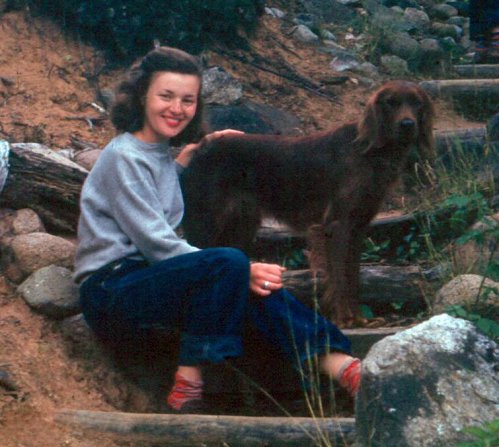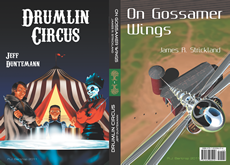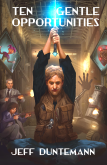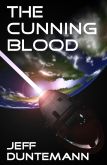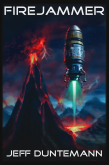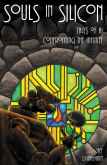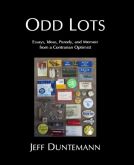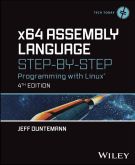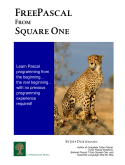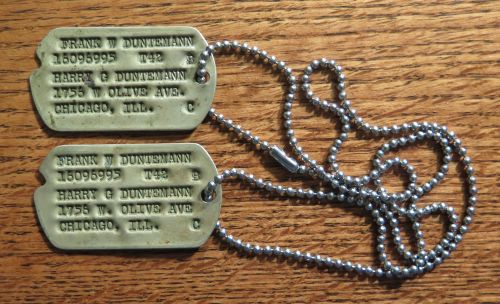
I haven’t posted much lately. Hey, how many more times do you want to hear “I threw another metric shitload of stuff into boxes”? That’s been my life, more or less, for several weeks.
Well, today, I was packing books and other things in my office into boxes (yet again) and happened upon the little box of things that came to me from my father: his gas company tie tack, a Lane Tech prom favor, his Holy Name Society lapel pin, one of my grandfather’s medals from WWI, his WWII service medal, his Ruptured Duck, his corporal’s stripes, and finally–by then I had to reach for a Kleenex–his WWII dog tags.
My father signed up for the Army the day after Pearl Harbor. He was 19. He wanted to be in the infantry, but he had a crooked leg and a limp and didn’t qualify. The Army told him to finish his freshman year of college at Northwestern, and told him there’d be a spot at radio operator school waiting for him in June. There was some grumbling, especially since he hated the accounting curriculum his father had browbeaten him into taking, but so it was. That June he went to Scott Field in southern Illinois, and became one helluva radio operator. He was in the AACS, and could copy Morse in his head at 30+ WPM and hammer it out on a beat-up Olivetti mill all night long. He had a job and threw himself into it with everything he had–it was his way–but what he really wanted to do was shoot Germans.
This always puzzled me, and it had nothing to do with my ancestry–or his. It took me decades to figure it out, and I had to dig for clues in a lot of odd places. He told a lot of stories, and I heard a few more from my mother and Aunt Kathleen, his sister. Once I was in my forties and had put a little distance between myself and my father’s long, agonizing death, I could deal with the troubling reality: My father was a wiseass, a snot, a fighter, a dare-taker. He was suspended several times from high school for fighting (and once beat the crap out of a much taller kid after the kid had stabbed him in the stomach in wood shop) and took a fifth year to finish. Limp or no limp, he had at age 45 broken up a fight in Edison Park single-handed, while my little sister watched in astonishment. He was literally throwing teenaged boys in every direction until they quit beating on a smaller boy at the bottom of the pile. Limp or no limp, he dove into deep water once and hauled a drowning man back to shore under one arm. (He was all muscle, and swam like a shark.) I used to think of him as brave, but no: He was fearless, and that is not the same thing.
To be brave is to do what you know you have to do in spite of your fear. To be fearless is to just wade in and kick ass, damn the consequences. There were consequences, like six stitches in his stomach and being held back a year in school. I hate to think what might have happened if he had made the infantry. I might have ended up being some other man’s son.
He knew this, of course, and as I grew into my teens I think he was trying to guide me away from fearlessness and toward bravery, not that I had ever shown the least measure of fearlessness. (One of his weirdest failings as a parent was this unshakable assumption that I would grow up to be exactly like him.) He had a saying for it: “Kick ass. Just don’t miss.” The lesson was not to let fear paralyze you, but instead let it calibrate you. Fear can turn down the volume on your enthusiasm and force you to take stock of your resources and your limitations. I got that, and have done as well as I have by balancing enthusiasm with discernment. Only one other piece of advice from my father (“If you’re lucky and smart you’ll marry your best friend”) has ever served me better.
As I’ve mentioned here a number of times, our house is positioned on the slopes of Cheyenne Mountain such that we can hear the bugle calls (and cannon!) from Fort Carson, two miles downslope. We hear taps most nights, and I realize (now that most of the house is at last in boxes) that I won’t be hearing it a great many more times, and almost certainly not again on Veterans’ Day. Tonight I will go out on the deck again and salute both the brave and the fearless, my father and countless others who have kicked ass in the service of their countries. Some missed, many didn’t, and the lucky ones came home to tell their stories and raise their (sometimes peculiar) sons.
I am by no means fearless, and I sincerely hope that I never have to be truly brave. However, if I ever have to kick ass, I will. And thanks to a man who knew the difference between bravery and fearlessness, when that time comes, I will not miss.
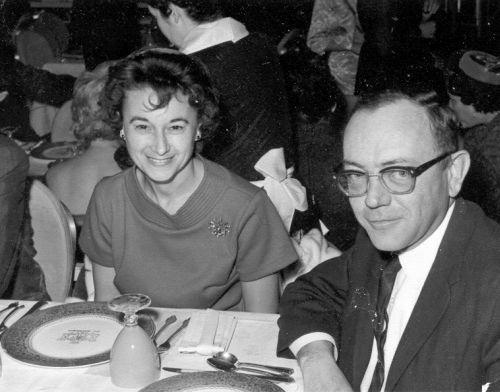

 Our house is on the slopes of Cheyenne Mountain, and our back deck looks down on Fort Carson. We hear bugle calls at 6:30, noon, and 5:00, accompanied by a cannon. Then every night at 10 PM, taps drifts up the mountain. If I’m still up and around, I go out on the back deck and remember three men. When the echoes die away among the mountain canyons, I salute, and whisper, “Thank you, gentlemen.”
Our house is on the slopes of Cheyenne Mountain, and our back deck looks down on Fort Carson. We hear bugle calls at 6:30, noon, and 5:00, accompanied by a cannon. Then every night at 10 PM, taps drifts up the mountain. If I’m still up and around, I go out on the back deck and remember three men. When the echoes die away among the mountain canyons, I salute, and whisper, “Thank you, gentlemen.” Frank W. Duntemann was attached to the AACS (
Frank W. Duntemann was attached to the AACS ( As I passed the photo of my godmother, Kathleen Duntemann, on the bookcase earlier today, I quietly wished her a happy St. Patrick’s Day. (It might be customary to say, “Wherever she is” except that I know exactly where she is.) She and my grandmother Sade Prendergast Duntemann were excellent cooks, and on St. Patrick’s Day there would almost always be corned beef and cabbage, duck, or goose, all cooked using ancient Irish recipes. I’m not sure if it was a purely family eccentricity, but back when I was still living at home, a well-picked winter goose or duck carcass would be tied with some twine to a branch of the big sycamore tree by the back door. The birds feasted, and according to my mother, the fatty leftovers allowed the now-lean birds to survive the remainder of those nasty Chicago winters.
As I passed the photo of my godmother, Kathleen Duntemann, on the bookcase earlier today, I quietly wished her a happy St. Patrick’s Day. (It might be customary to say, “Wherever she is” except that I know exactly where she is.) She and my grandmother Sade Prendergast Duntemann were excellent cooks, and on St. Patrick’s Day there would almost always be corned beef and cabbage, duck, or goose, all cooked using ancient Irish recipes. I’m not sure if it was a purely family eccentricity, but back when I was still living at home, a well-picked winter goose or duck carcass would be tied with some twine to a branch of the big sycamore tree by the back door. The birds feasted, and according to my mother, the fatty leftovers allowed the now-lean birds to survive the remainder of those nasty Chicago winters.
